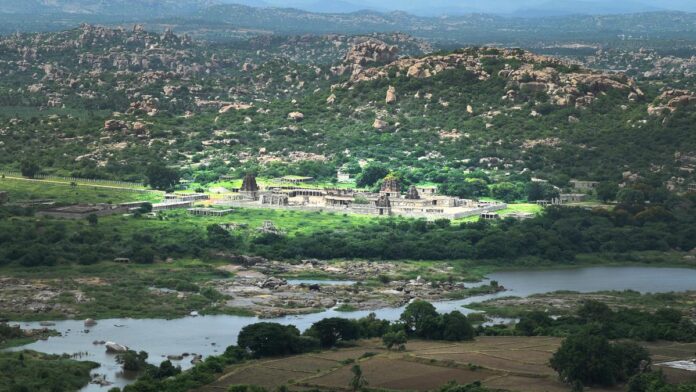
Tungabhadra river flowing through Hampi.
| Photo Credit: k BHAGYA PRAKASH
Hampi, the UNESCO-recognised historical site, was the capital of the Vijayanagara empire from 1336 to 1565. Foreign travellers from Persia, Europe and other parts of the world have chronicled the wealth of the place and the unique cultural mores of this kingdom built on the banks of the Tungabhadra river. There are fine descriptions to be found of its temples, farms, markets and trading links, remnants of which one can see in the ruins now. The Literature, architecture of this era continue inspire awe.
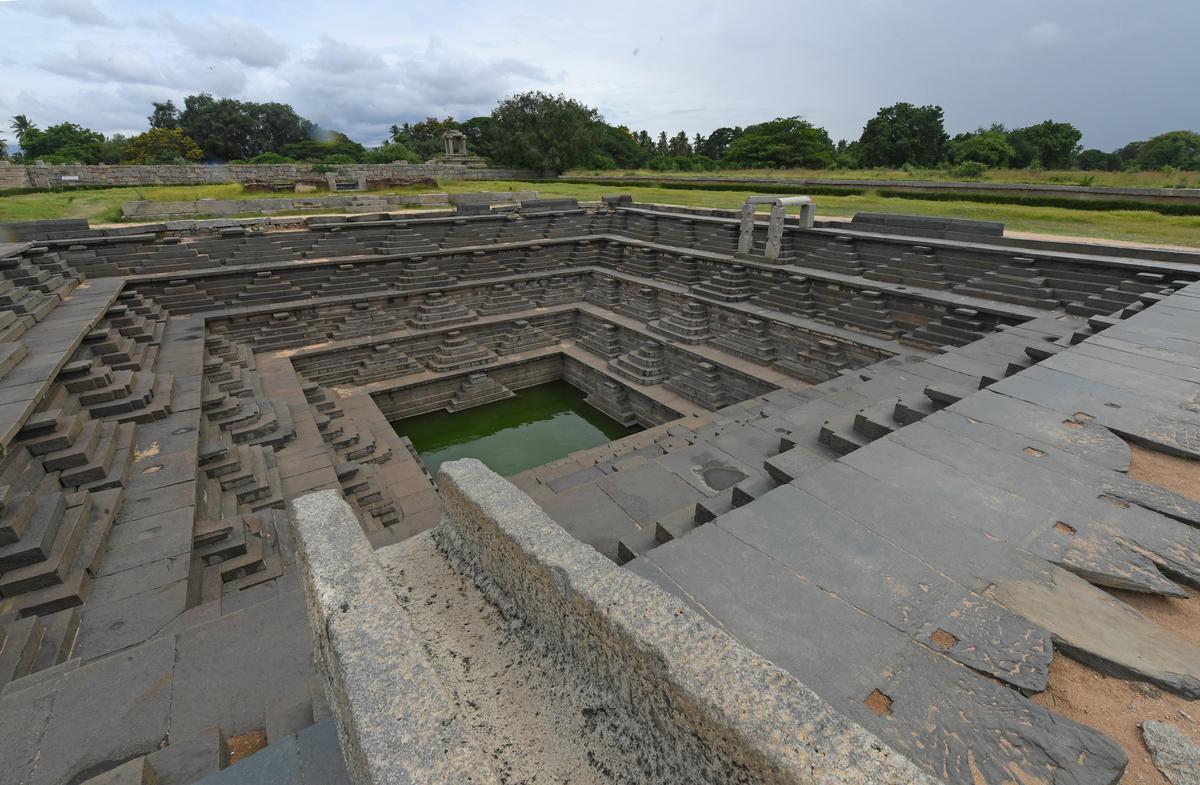
A stepped water tank was constructed near Mahanavami Dibba. A chain of aqueducts brought water from the Kamalapura Tank, which was probably used to fill the wells.
| Photo Credit:
k BHAGYA PRAKASH
On a trip to Hampi, while some places like Vijaya Vittala temple or stone chariot remain must-visit places, a more leisurely and closer look at the monuments reveal many facets of this town. For instance, remains that tell the technology used to draw water — for agriculture, drinking, bathing and so on — from Tungabhadra and other sources to the city makes for a fascinating study.
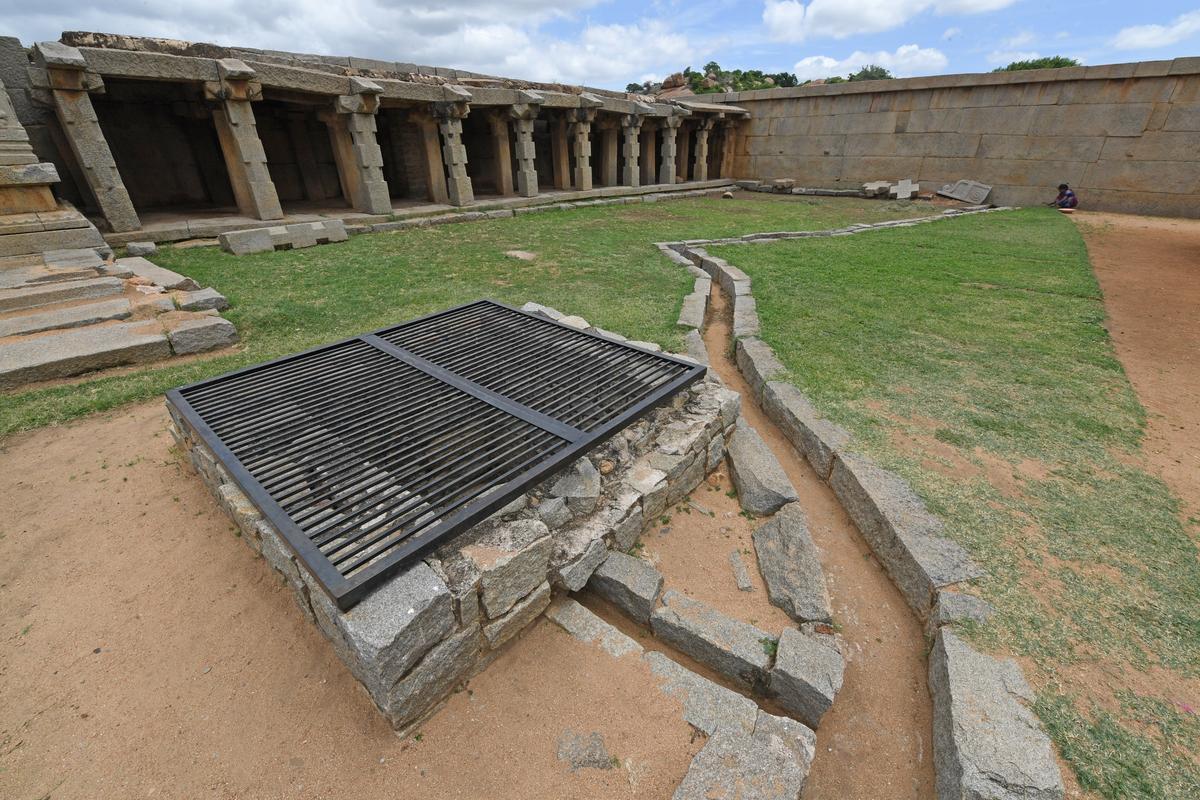
Chain of aqueducts that are used to bring water at Hazara Rama temple.
| Photo Credit:
k BHAGYA PRAKASH
Though building anekattu (check dams) started during the Hoysala times, Vijayanagara empire continued this in various places. We find one inscription that states that Bukkaraya, the earliest ruler, had built an anekattu across Penna river. Among the ruins of Hampi one can see canals small and big that brought water to the city. Some of them are still in use.
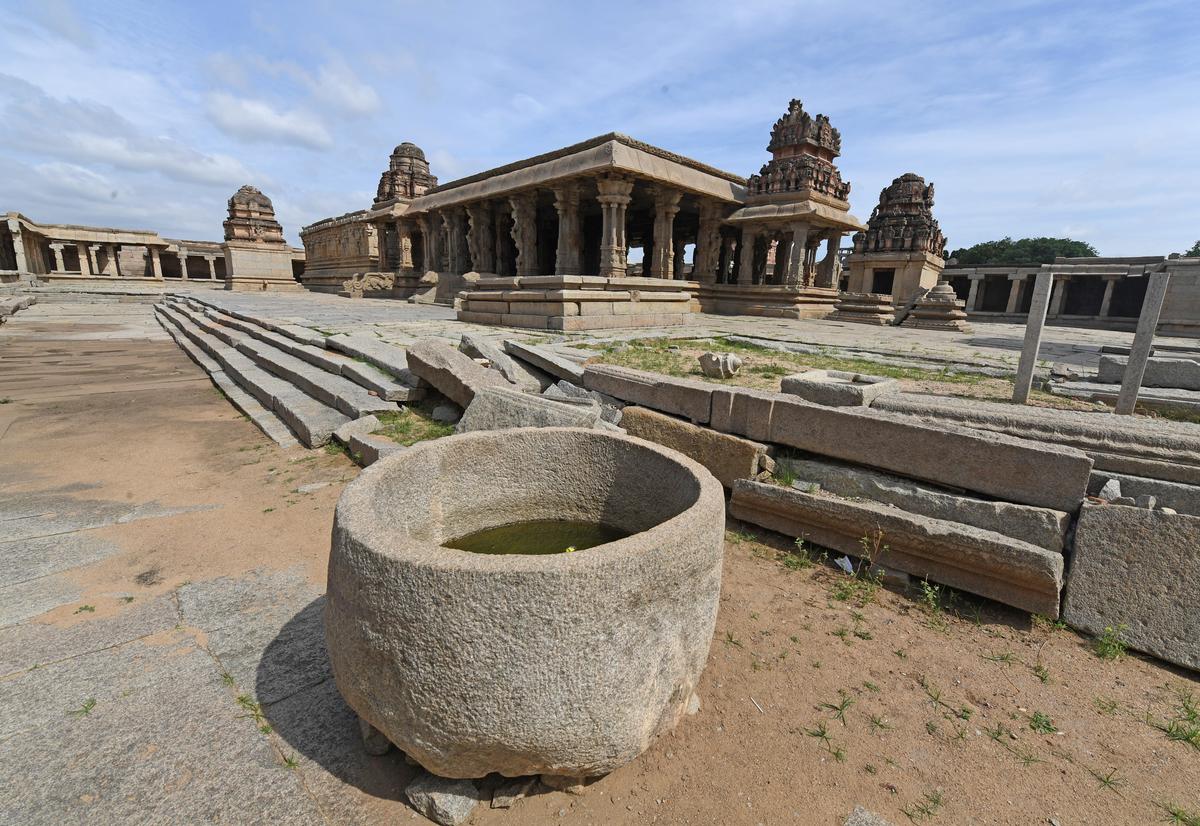
A huge bowl kind of tank made of single rock granite where water stored for the devotees visit to Krishna temple.
| Photo Credit:
k BHAGYA PRAKASH
Water ducts constructed in granite can be seen which provided water to palaces, temples, market places, public bathing areas and so on. There are many pushkaranis (temple ponds), wells and rock-cut tanks built in the city to provide drinking water at various public gathering places. There were water storage places especially for domestic animals, horses, elephants etc. too.
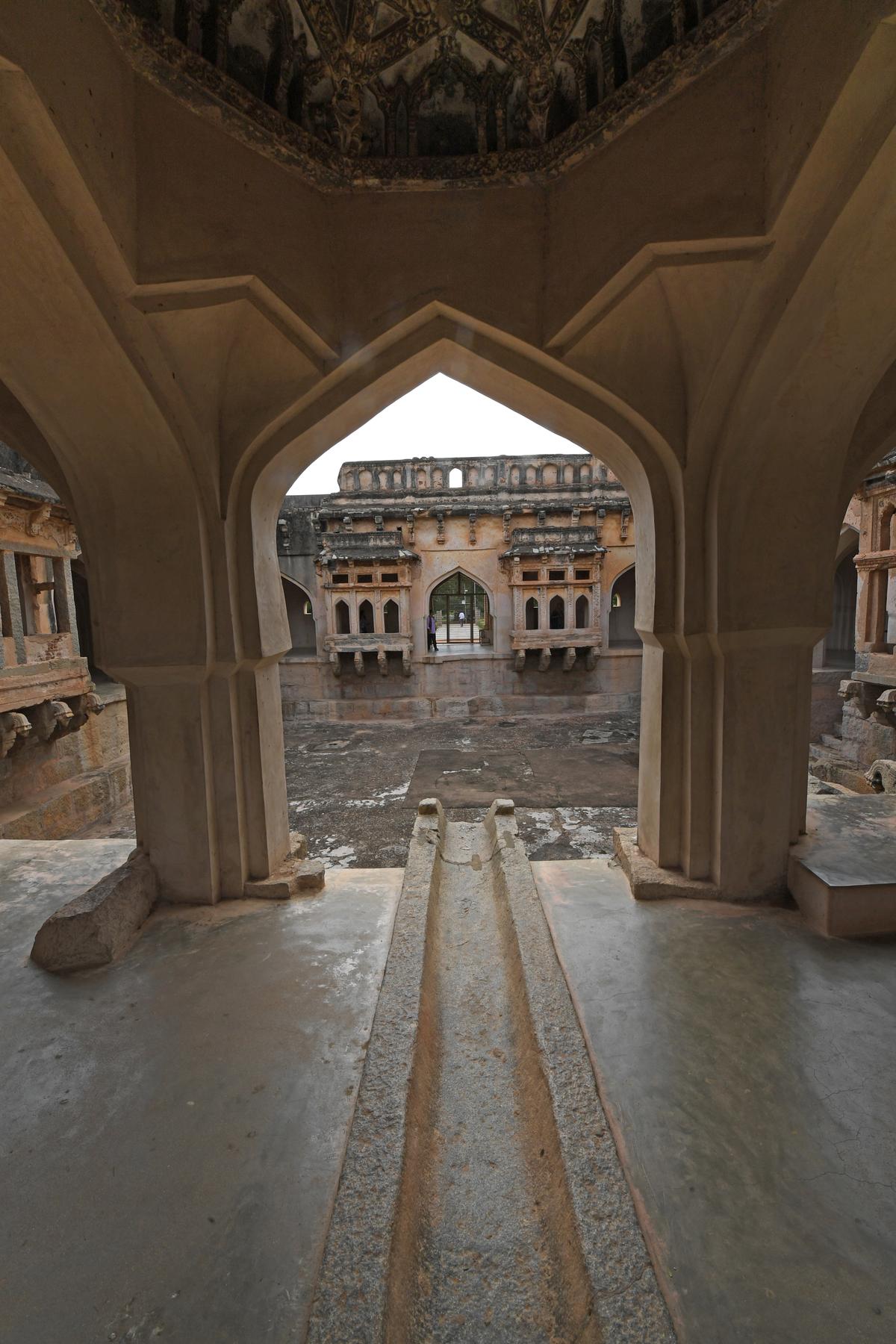
A slopping channel on the eastern side provides water to the Queens bath from a water channel which runss around the structure.
| Photo Credit:
k BHAGYA PRAKASH
The water supply system gives a traveller insights into the extraordinary city planning that was carried out by the kings, architects and workers of the Vijayanagara empire.
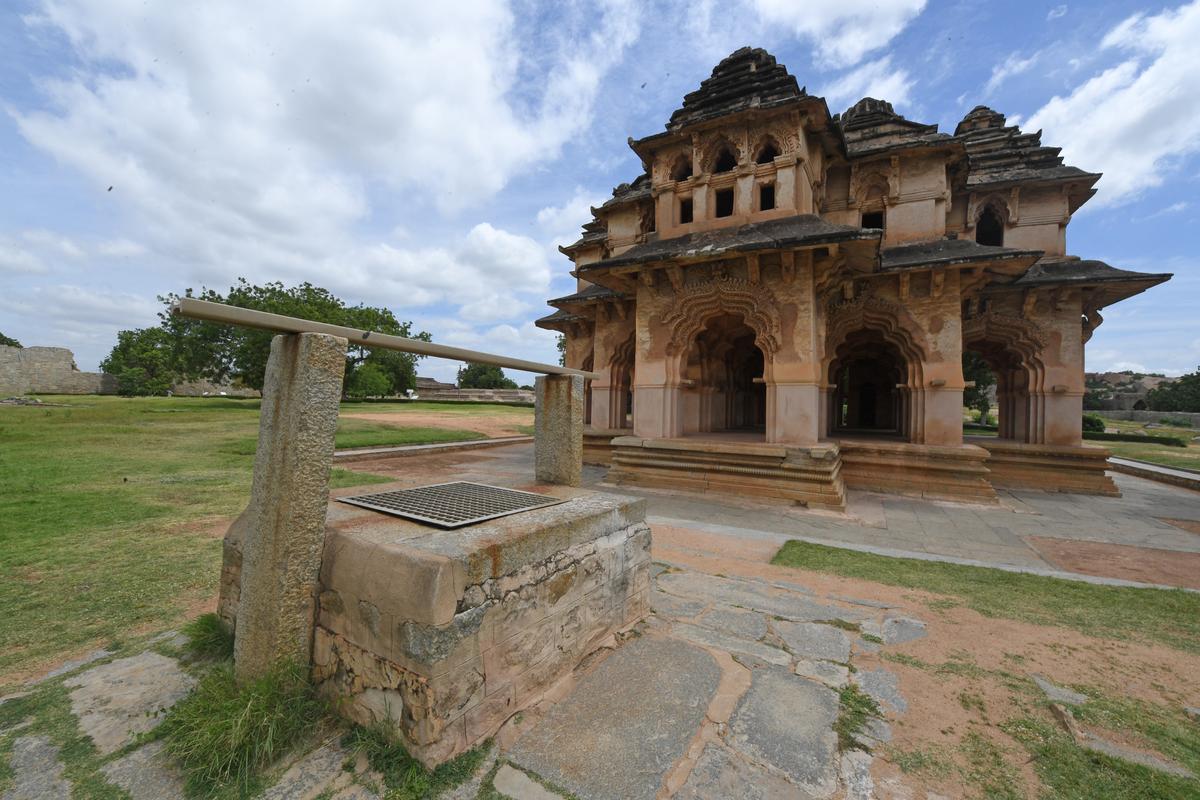
A well to provide water was constructed inside the Lotus Mahal premises.
| Photo Credit:
k BHAGYA PRAKASH
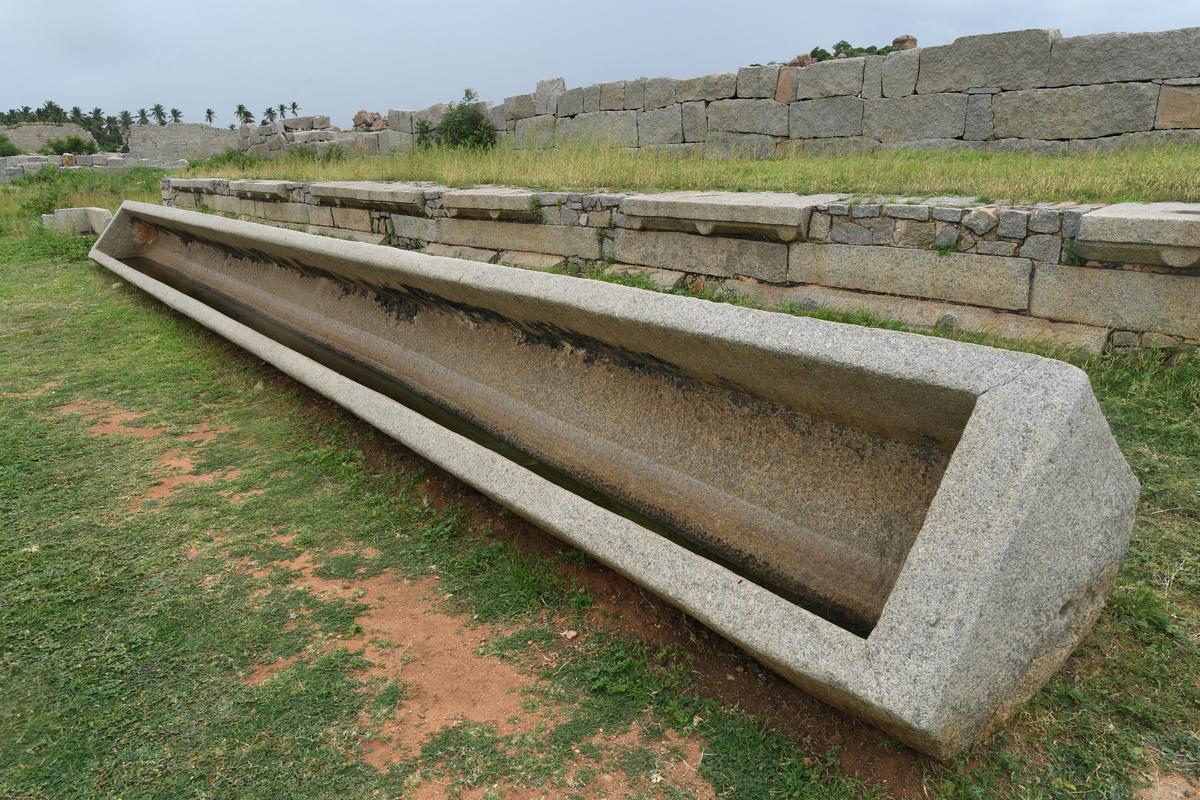
A water storage tank near the audience hall in the Royal Centre, carved in a 12 mt long single huge granite block can hold 2000 ltrs water for the horses belongs to officials.
| Photo Credit:
k BHAGYA PRAKASH
Published – November 22, 2024 09:00 am IST
